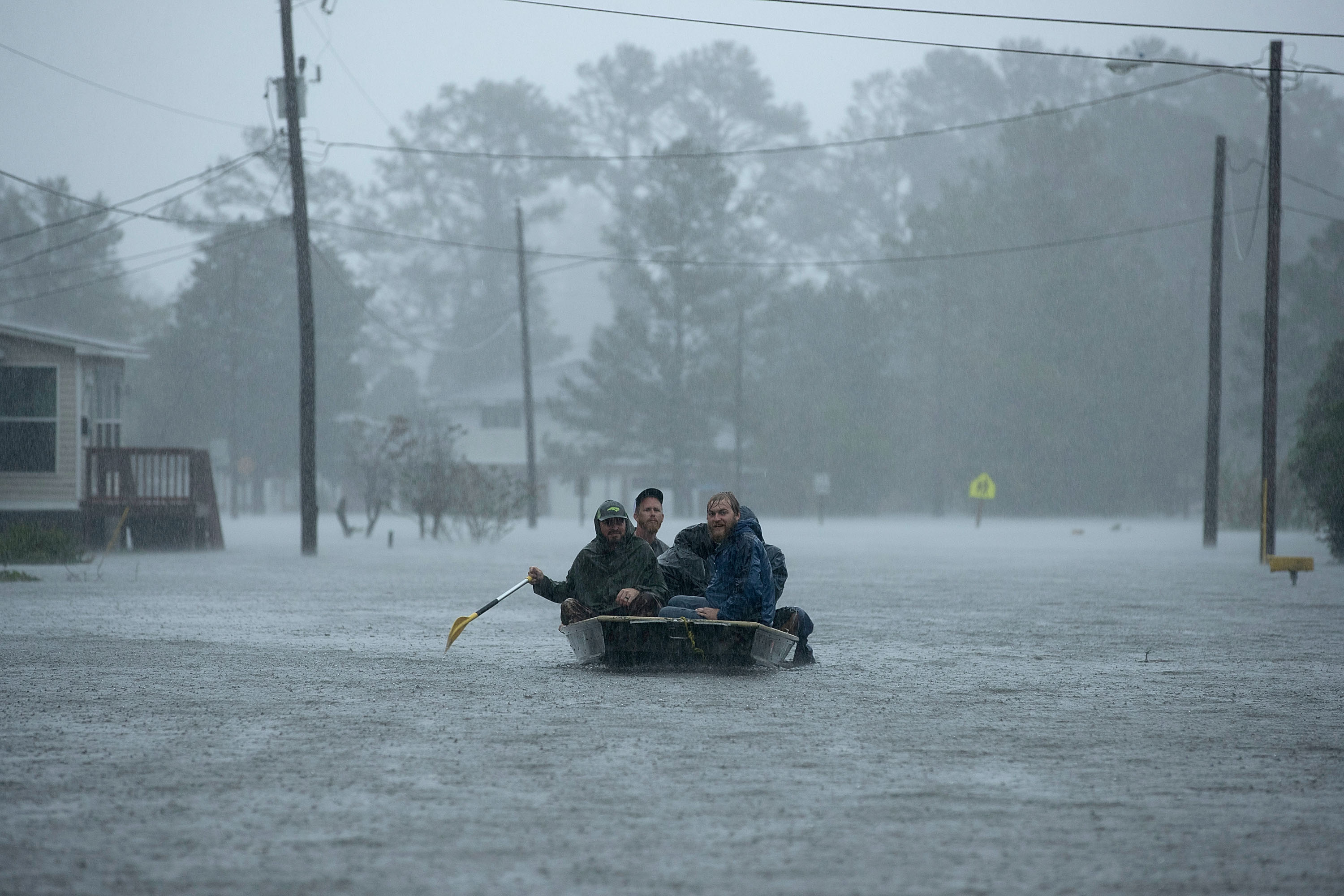Hurricane Florence reportedly caused damages as high as $22 billion, and the storm contributed to the deaths of at least 50 people. In a Tweet, scientists at the National Weather Service (NWS) called the storm a “1,000 year rain event.” That means there was a 0.1% chance of the storm producing the amount of rainfall that it did. This low probability points to the possibility that human activity may have contributed to severity of the storm.Hurricane Florence dumped upwards of 50 inches of rain in some places and displaced 10 trillion gallons of water, over three days, across the Carolinas and Virginia.
A group of researchers estimated that the storm produced 50% more rain due to climate change. This estimation factored in human activity to estimate where the rain would fall and in what amounts. Kevin Reed, a professor from Stony Brook University, said, “ Our preliminary analysis shows that the forecast was fairly successful in where the storm made rainfall.” This supports the conclusion that the estimated role of human activity was accurate as well.
Coal plays a central role in this story. Energy production via coal burning has historically been a primary contributor to climate change, facilitating the rapid warming of the Earth’s Oceans. Hurricanes require sea surface temperatures of 82 degrees Fahrenheit or higher to have enough energy to create a storm. Because of climate change, ocean waters that were already warm are getting warmer, and those that weren’t warm enough to support hurricanes are reaching that point. This essentially creates more fuel to bring about stronger hurricanes with more rainfall, which cause larger floods and soil erosion. This can cause environmental catastrophes.
Two coal plants maintained by the utility company, Duke Energy, experienced severe flooding. Both plants maintained on site coal ash storage, which may have contaminated nearby water sources. Coal ash is the waste product left over after coal is combusted. It contains some of the deadliest toxic metals, such as arsenic, lead, mercury, cadmium, chromium and selenium. These, and other toxicants, are capable of causing cancer and neurological damage in humans.
At the L.V. Sutton plant near the North Carolina coast, flood waters eroded an earthen dam, separating a coolant pond and recreational area (Sutton Lake) from a coal ash landfill. It’s unclear whether the drain connecting the pond to the Cape Fear River was opened or closed. Many environmental groups believe that it was likely some toxic coal ash that may have contaminated local water sources.
In Goldsboro, North Carolina, inactive coal ash basins at the H.F. Lee site were inundated by overflowing waters from the Neuse River. Ash was later identified in swamps outside the basin, and it is unclear how much escaped into the river. The government and environmental groups will have to expend great amounts of resources to identify the level of contamination and initiate a cleanup operation, if toxicity levels are severe.
North Carolina has a poor history of managing the byproducts of its coal production. In March, 2015, the state fined Duke Energy 25 million dollars for violating groundwater safety regulations, but later reduced the fine to a mere seven million dollars.
This soft stance on coal has empowered grassroots associations to pick up the government’s slack. In an interview with Al Jazeera, Bobby Jones, of the Down East Coal Ash Coalition, stands on a road with a coal power plant looming in the background. “They still gotta deal with six million tons of poisonous coal ash,” he said. The lax regulations on coal waste, coupled with increasingly severe storms in the southeastern United States, will likely lead to more environmental calamities in the future.
Coal played a role in multiple levels of this environmental cataclysm. CO2 from coal contributed to the formation of a storm of stronger severity, which was capable of compromising hazardous and short-sighted containment operations that housed the toxic byproducts of coal combustion. The environmental causes and effects of Hurricane Florence make a compelling case for our society to reassess whether or not it’s doing enough to account for a legacy of powering our civilization through environmentally destructive means.











